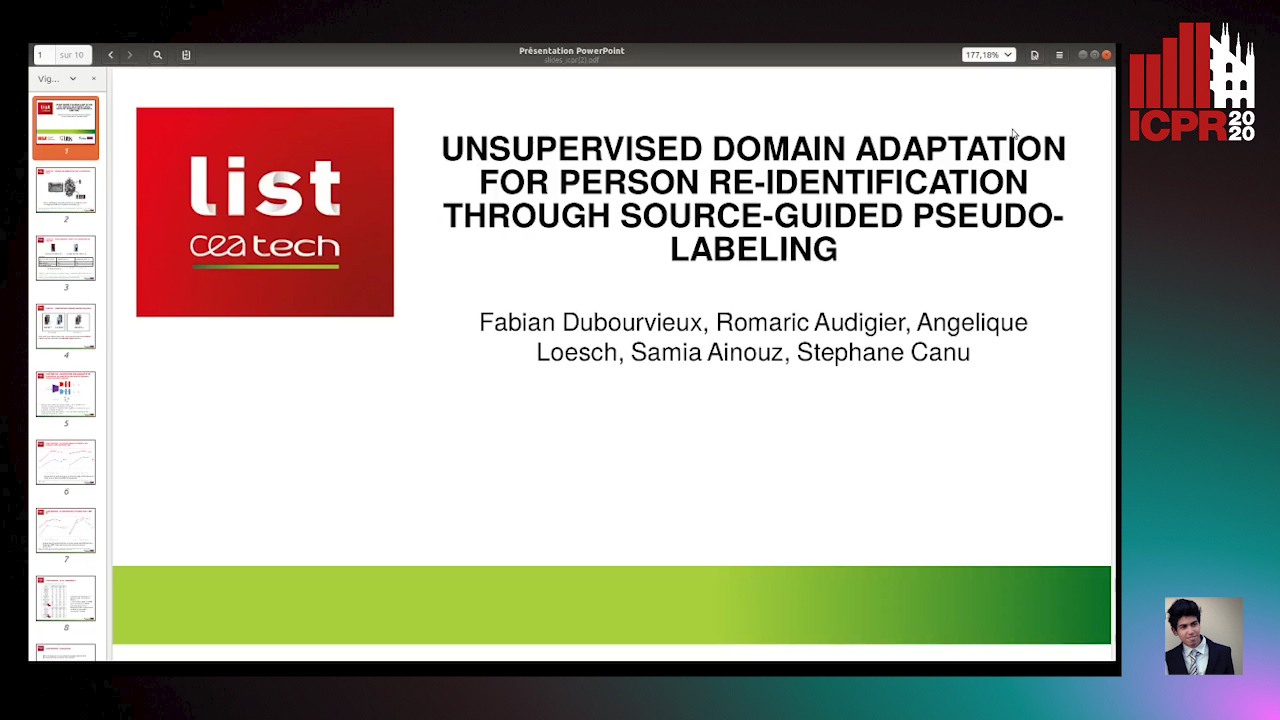Ainouz-Zemouche Samia
Paper download is intended for registered attendees only, and is
subjected to the IEEE Copyright Policy. Any other use is strongly forbidden.
Papers from this author
Unsupervised Domain Adaptation for Person Re-Identification through Source-Guided Pseudo-Labeling
Fabian Dubourvieux, Romaric Audigier, Angélique Loesch, Ainouz-Zemouche Samia, Stéphane Canu

Auto-TLDR; Pseudo-labeling for Unsupervised Domain Adaptation for Person Re-Identification
Abstract Slides Poster Similar
Person Re-Identification (re-ID) aims at retrieving images of the same person taken by different cameras. A challenge for re-ID is the performance preservation when a model is used on data of interest (target data) which belong to a different domain from the training data domain (source data). Unsupervised Domain Adaptation (UDA) is an interesting research direction for this challenge as it avoids a costly annotation of the target data. Pseudo-labeling methods achieve the best results in UDA-based re-ID. They incrementally learn with identity pseudo-labels which are initialized by clustering features in the source re-ID encoder space. Surprisingly, labeled source data are discarded after this initialization step. However, we believe that pseudo-labeling could further leverage the labeled source data in order to improve the post-initialization training steps. In order to improve robustness against erroneous pseudo-labels, we advocate the exploitation of both labeled source data and pseudo-labeled target data during all training iterations. To support our guideline, we introduce a framework which relies on a two-branch architecture optimizing classification in source and target domains, respectively, in order to allow adaptability to the target domain while ensuring robustness to noisy pseudo-labels. Indeed, shared low and mid-level parameters benefit from the source classification signal while high-level parameters of the target branch learn domain-specific features. Our method is simple enough to be easily combined with existing pseudo-labeling UDA approaches. We show experimentally that it is efficient and improves performance when the base method has no mechanism to deal with pseudo-label noise. And it maintains performance when combined with base method that already manages pseudo-label noise. Our approach reaches state-of-the-art performance when evaluated on commonly used datasets, Market-1501 and DukeMTMC-reID, and outperforms the state of the art when targeting the bigger and more challenging dataset MSMT.